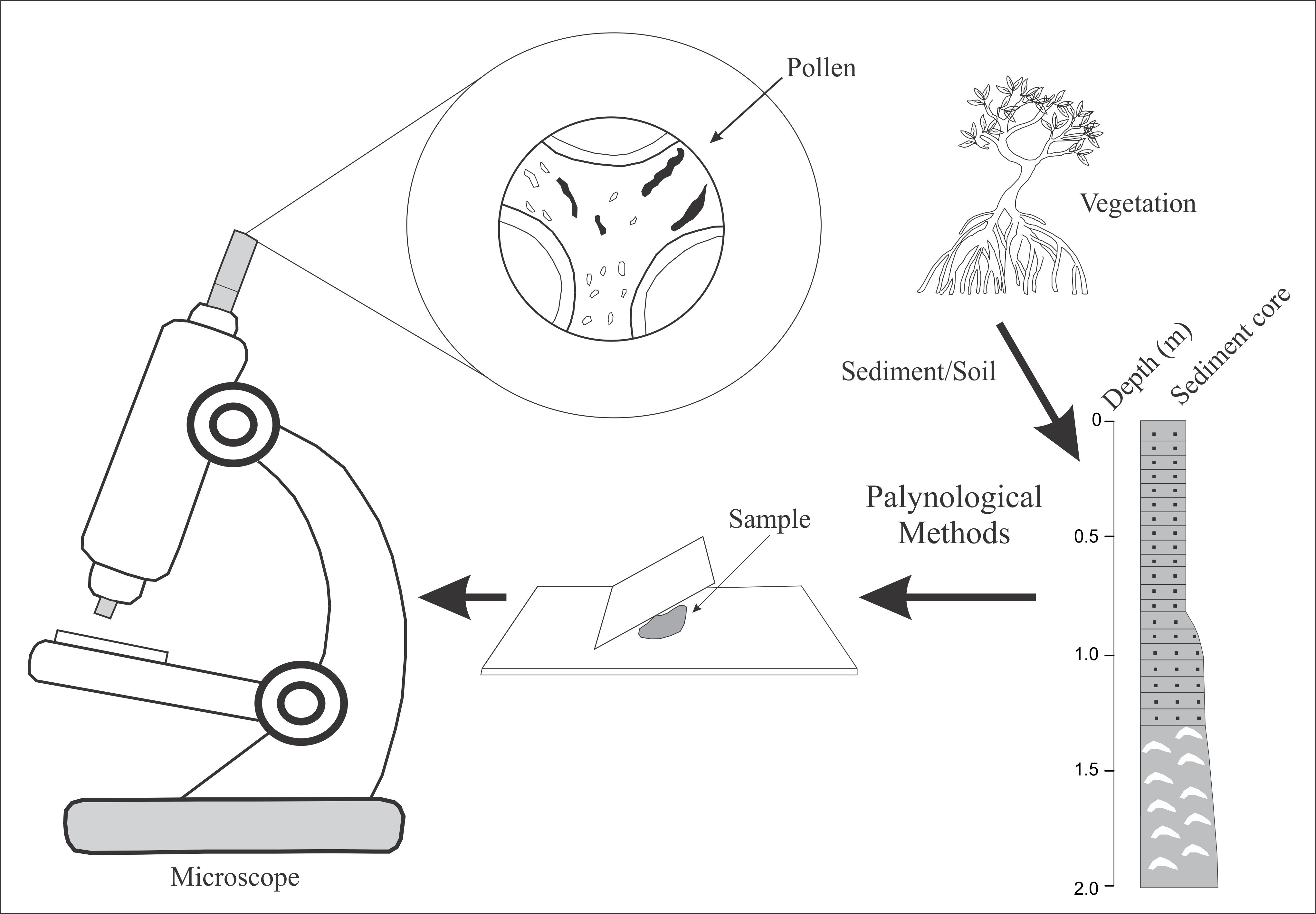PALYNOLOGY: A FORENSIC TRACE TOOL TO IDENTIFY A TEMPORAL COASTAL VEGETATION CHANGES
DOI:
https://doi.org/10.36524/ric.v9i3.2258Palavras-chave:
Brazilian Coastal Region, Holocene, Mangrove, Pollen, SedimentologyResumo
The purpose of this paper was to identify the temporal vegetation changes at the mouth of the Jucu River (ES), southeastern Brazil using palynology as a forensic trace tool. Thus, a sedimentary core was collected with a depth of 190 cm, and was used to perform pollen, sedimentary and C-14 dating analyses. The results showed the formation of four zones to describe the vegetation evolution and the environmental changes, according to cluster analysis of pollen taxa. The first zone started more than two thousand years before present (BP), with sandy sediments, which is indicative of high energy flow. The analysis of the palynological profile indicated the presence of herbaceous vegetation. For the second and third zones, there were a predominance of silt-sandy sediment, with the installation of the mangrove since at least ±2212 cal years BP. Finally, the fourth zone considers the period of half-century until the present, marked by the presence of silt-clay sediment and the predominance of herbaceous vegetation. Therefore, those results demonstrate a high application of the pollen analysis to describe the vegetation succession.

Downloads
Publicado
Edição
Seção
Licença
Copyright (c) 2023 Revista Ifes Ciência

Este trabalho está licenciado sob uma licença Creative Commons Attribution-NonCommercial-NoDerivatives 4.0 International License.
Autores que publicam nesta revista concordam com os seguintes termos:
- Autores mantém os direitos autorais e concedem à revista o direito de primeira publicação, com o trabalho simultaneamente licenciado sob a Licença Creative Commons Attribution que permite o compartilhamento do trabalho com reconhecimento da autoria e publicação inicial nesta revista.
b. Autores têm permissão e são estimulados a publicar e distribuir seu trabalho online (ex.: em repositórios institucionais ou na sua página pessoal) a qualquer ponto antes ou durante o processo editorial, já que isso pode gerar alterações produtivas, bem como aumentar o impacto e a citação do trabalho publicado (Veja O Efeito do Acesso Livre).


